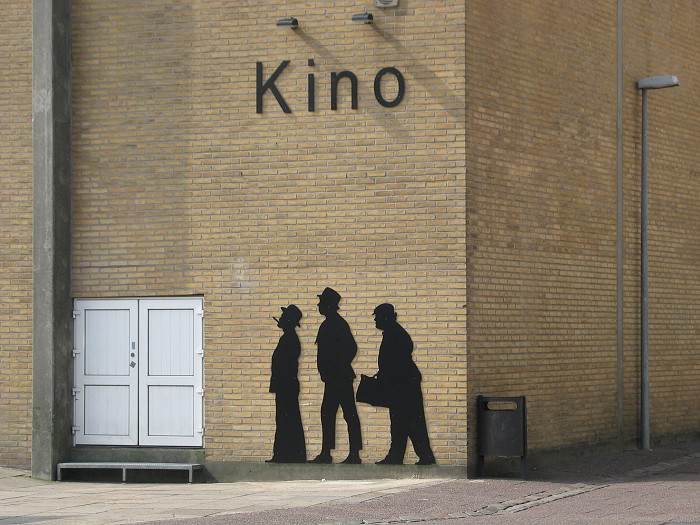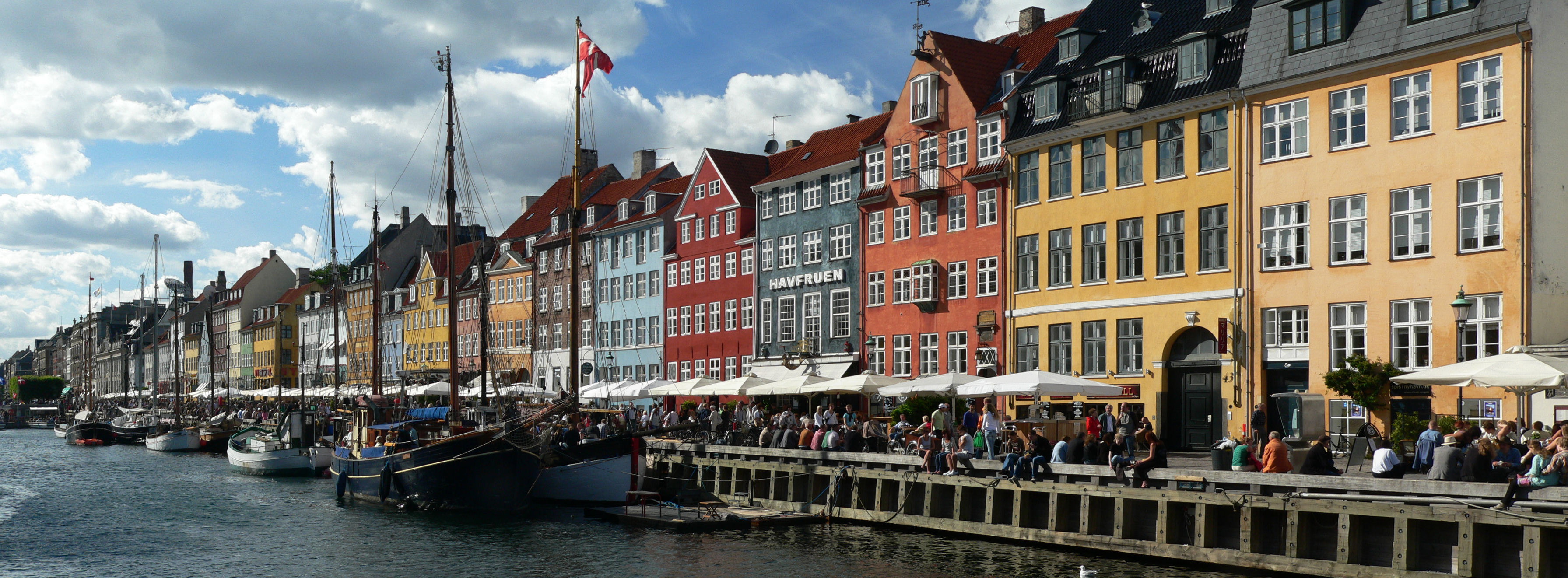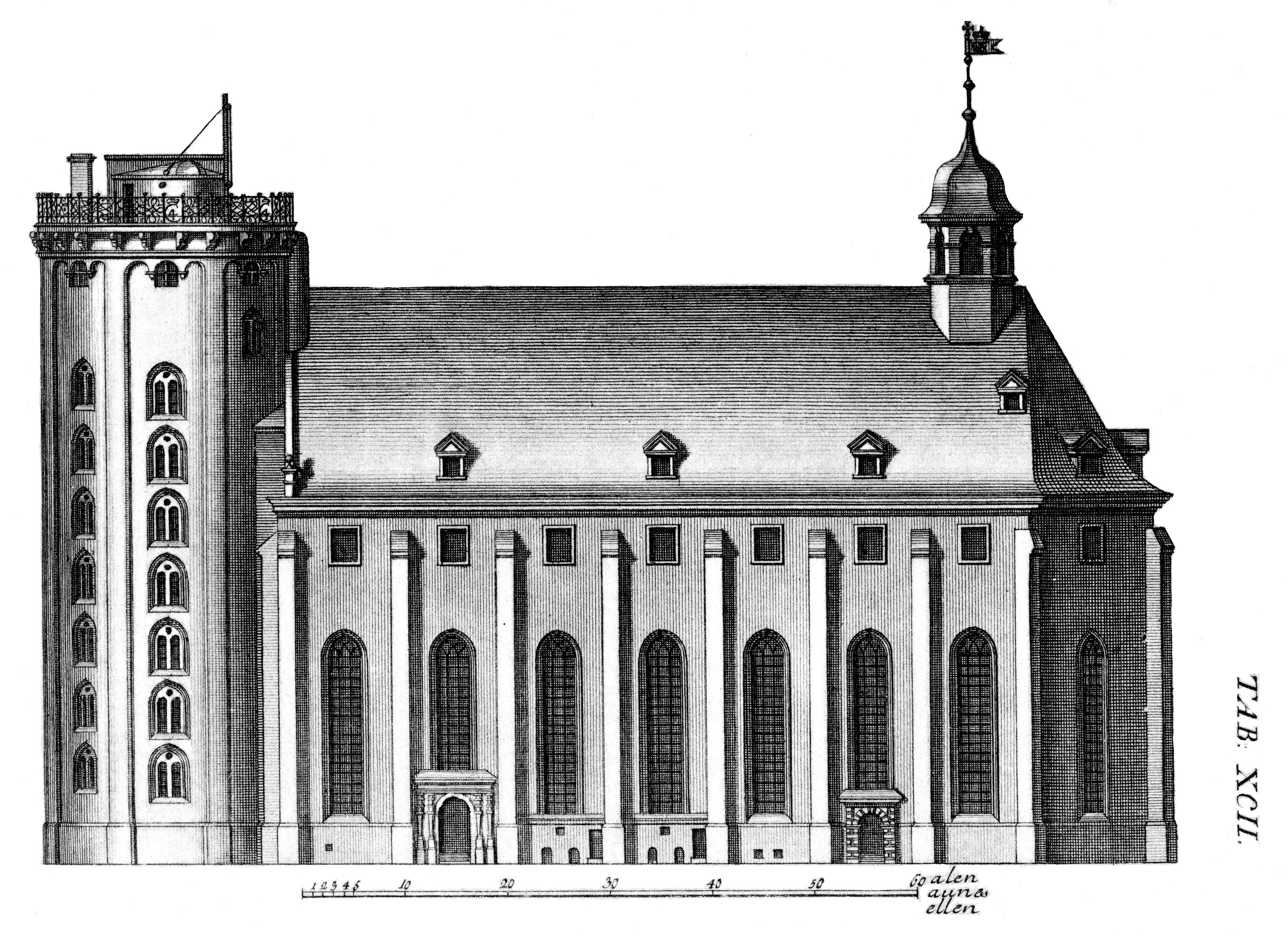|
Pilestræde
Pilestræde ( lit. English: Willow Alley) is a street in central Copenhagen, Denmark. It is a side street to the pedestrianized shopping street Strøget and commonly associated with the newspaper publishing house Berlingske Media, which has its headquarters in the street. History The street name refers to Pilegården, a farm which was located at the site in the Middle Ages. Pilegårde is first mentioned in 1419 and was divided into several smaller properties in 1579. In the 16th century, Copenhagen's stud farm (''Københavns Avlsgård''), where the city's bulls were stabled, was also located along the street. The stud farm was in 1671 sold to Trinitatis Church for use as a cemetery. The northernmost part of Pilestræde was originally called Springergade with a reference to the bulls at the farm. Local residents found the name inappropriate and the street was therefore included in Pilestræde in 1881. In 1765, Berlingske's publishinghouse established in one of the yards on th ... [...More Info...] [...Related Items...] OR: [Wikipedia] [Google] [Baidu] |
Pilestræde By Frederik Riise
Pilestræde ( lit. English: Willow Alley) is a street in central Copenhagen, Denmark. It is a side street to the pedestrianized shopping street Strøget and commonly associated with the newspaper publishing house Berlingske Media, which has its headquarters in the street. History The street name refers to Pilegården, a farm which was located at the site in the Middle Ages. Pilegårde is first mentioned in 1419 and was divided into several smaller properties in 1579. In the 16th century, Copenhagen's stud farm (''Københavns Avlsgård''), where the city's bulls were stabled, was also located along the street. The stud farm was in 1671 sold to Trinitatis Church for use as a cemetery. The northernmost part of Pilestræde was originally called Springergade with a reference to the bulls at the farm. Local residents found the name inappropriate and the street was therefore included in Pilestræde in 1881. In 1765, Berlingske's publishinghouse established in one of the yards on the ea ... [...More Info...] [...Related Items...] OR: [Wikipedia] [Google] [Baidu] |
Berlingske
''Berlingske'', previously known as ''Berlingske Tidende'' (, ''Berling's Times''), is a Danish national daily newspaper based in Copenhagen. It is considered a newspaper of record for Denmark. First published on 3 January 1749, ''Berlingske'' is Denmark's, as well as the Nordic region's, oldest continually operating newspaper and among the oldest newspapers in the world. History and profile ''Berlingske'' was founded by Denmark's Royal Book Printer Ernst Henrich Berling and originally titled ''Kjøbenhavnske Danske Post-Tidender'', then the ''Berlingskes Politiske og Avertissements Tidende.'' The paper was supported by the Conservative Party. Until 1903 it had the official right to publish news about the government. In 1936, the newspaper's title was shortened to ''Berlingske Tidende''. Mendel Levin Nathanson twice served as the editor-in-chief of the paper: between 1838 and 1858 and between 1866 and 1868. The publisher is Det Berlingske Officin. The paper has a conservat ... [...More Info...] [...Related Items...] OR: [Wikipedia] [Google] [Baidu] |
Julie Fagerholt
Julie Fagerholt (born 17 April 1968) is a Danish fashion designer and founder of the luxury clothing brand Heartmade. She also creates '' haute couture''. Her customers include Crown Princess Mary of Denmark. Biography Julie Fagerholt grew up in Skovshoved north of Copenhagen, the daughter of Ninja Tholstrup Bramsen, a child psychologist, and Nils Fagerholt, an architect and a professor at the Royal Danish Academy of Fine Arts. She completed her education at the Danish Design School in 1993. In 1998, she set up her company Heartmade in a courtyard on Pilestræde Pilestræde ( lit. English: Willow Alley) is a street in central Copenhagen, Denmark. It is a side street to the pedestrianized shopping street Strøget and commonly associated with the newspaper publishing house Berlingske Media, which has its h ... in Copenhagen. Originally focusing on ''haute couture'', the brand has mainly produced prét-à-porter collections since 2000. In 2000, her first collection won ''The Gold ... [...More Info...] [...Related Items...] OR: [Wikipedia] [Google] [Baidu] |
Herman Jacob Bing
Herman (Heiman) Jacob Bing (16 March 1776 - 10 March 1844) was a Jewish-Danish educator and bookseller. He was a co-founder of Copenhagen's first Jewish school (Bing & Kalich's Institute) in 1803 and established a book shop in 1820 which was later continued by his sons Meyer Herman Bing and Jacob Herman Bing under the name H. J. Bing & Søn. His sons were also co-founders of the Bing & Grøndahl porcelain factory while his grandson Harald Bing was a co-founder of the newspaper Politiken. Early life and education Bing was born in Amsterdam, the son of Jacob Bing (died 1780) and Jitle Oppenheim (died 1793). His mother's second marriage was to Moses Ruben Renner in Hamburg in April 1787. Career Bing came to Copenhagen in 1799 where he initially worked as calico printer and later as a tutor in Roskilde. In 1803, he and his brother-in-law L. J. Kalisch founded a Jewish school. Approximately 400 students had graduated from the school by 1818. It played an important role in the ema ... [...More Info...] [...Related Items...] OR: [Wikipedia] [Google] [Baidu] |
Norse Projects
Norse Projects is a clothing brand based in Copenhagen, Denmark. The company designs and develops seasonal collections of men's and womenswear, blending influences from streetwear and classical workwear with high-end fashion. The creative director of the company is Tobia Sloth. History Norse Projects was founded by Tobia Sloth, Anton Juul and Mikkel Grønnebæk as a retail streetwear shop and art gallery in 2004. The company launched its own line of menswear in 2009. In 2013, Norse Projects topped a list of the 15 best Scandinavian men's wear brands by Complex. The company introduced its inaugural womenswear collection for Fall/Winter 2015. Flagship store Norse Projects has a multibrand store in Pilestræde 3941 in central Copenhagen that sells brands such as Visvim, Nanamica, Orslow and other imported labels. The store also stocks a selection of art books, magazines and fanzines. Norse Projects has a mixed multibrand and Norse Project store Kronprinsensgade Kronprinsensgade ( ... [...More Info...] [...Related Items...] OR: [Wikipedia] [Google] [Baidu] |
Copenhagen
Copenhagen ( or .; da, København ) is the capital and most populous city of Denmark, with a proper population of around 815.000 in the last quarter of 2022; and some 1.370,000 in the urban area; and the wider Copenhagen metropolitan area has 2,057,142 people. Copenhagen is on the islands of Zealand and Amager, separated from Malmö, Sweden, by the Øresund strait. The Øresund Bridge connects the two cities by rail and road. Originally a Vikings, Viking fishing village established in the 10th century in the vicinity of what is now Gammel Strand, Copenhagen became the capital of Denmark in the early 15th century. Beginning in the 17th century, it consolidated its position as a regional centre of power with its institutions, defences, and armed forces. During the Renaissance the city served as the de facto capital of the Kalmar Union, being the seat of monarchy, governing the majority of the present day Nordic countries, Nordic region in a personal union with Sweden and N ... [...More Info...] [...Related Items...] OR: [Wikipedia] [Google] [Baidu] |
Thomas Havning
Thomas Laub Hansen Havning was a Danish architect, illustrator, writer and royal building inspector born in Nyboder, Copenhagen on 4 September 1897. Career Thomas Havning graduated from the secondary school ''Borgerdydskolen'' in Copenhagen in 1909 and was admitted to the Royal Danish Academy of Fine Arts in September 1909 from where he graduated with a degree in architecture in 1917. He was subsequently employed by Poul Holsøe and Jesper Tvede 1912-14 and by Hack Kampmann 1916]-19. From 1920 to 1963 he was the advising architect for the Danish Ministry for Education and from 1944 to 1961 he was royal building inspector. Havning won the C. F. Hansen Medal in 1914 and the Eckersberg Medal in 1935 (for his own house in Valby). He received awards from Copenhagen Municipality in 1921, 1935, 1944 and 1951. Havning was a member of the Censorship Committee at Charlottenborg in 1920-23, 1927–36 and 1941, member of the board of the Architects' Association of Denmark 1918-2 ... [...More Info...] [...Related Items...] OR: [Wikipedia] [Google] [Baidu] |
The Olsen Gang Outta Sight
''The'' () is a grammatical article in English, denoting persons or things that are already or about to be mentioned, under discussion, implied or otherwise presumed familiar to listeners, readers, or speakers. It is the definite article in English. ''The'' is the most frequently used word in the English language; studies and analyses of texts have found it to account for seven percent of all printed English-language words. It is derived from gendered articles in Old English which combined in Middle English and now has a single form used with nouns of any gender. The word can be used with both singular and plural nouns, and with a noun that starts with any letter. This is different from many other languages, which have different forms of the definite article for different genders or numbers. Pronunciation In most dialects, "the" is pronounced as (with the voiced dental fricative followed by a schwa) when followed by a consonant sound, and as (homophone of the archaic p ... [...More Info...] [...Related Items...] OR: [Wikipedia] [Google] [Baidu] |
Olsen Gang
The ''Olsen Gang'' ( da, Olsen-banden, no, Olsenbanden, german: Die Olsenbande) is a Danish comedy film series created by Danish director Erik Balling and special effects expert Henning Bahs about the eponymous fictional criminal gang. The gang's leader is the criminal genius and habitual offender Egon Olsen and his accomplices are Benny and Kjeld (Kjell in Norwegian). The gang members are harmless, extremely rarely target ordinary citizens, and never deliberately use violence. The first film came in 1968; during the next thirty years a total of fourteen films were made. A Norwegian version of the film series was also made (a total of 14 films from 1969 to 1999), in most cases based directly on the scripts for the Danish films. Later, starting in 1981, Sweden also produced their own version: '' Jönssonligan''. Plot Most of the films start with Egon coming out of jail and being enthusiastically welcomed by Benny and Kjeld. The three men will then have a beer together in the ... [...More Info...] [...Related Items...] OR: [Wikipedia] [Google] [Baidu] |
Indre By
Indre By (lit. English, "Inner City"), also known as Copenhagen Center or K or Downtown Copenhagen, is an administrative district (''by'') in central Copenhagen, the capital of Denmark. It covers an area of , has a population of 26,223, and a population density of 5,638 per km². Neighboring city districts are as follows: * to the east and south east is Christianshavn, separated from the Inner City by the Inner Harbour (''Inderhavnen'') and Copenhagen Harbour (''Københavns Havn'') * to the north is Indre Østerbro * to the west is Indre Nørrebro and Frederiksberg municipality, which is not a part of Copenhagen municipality but rather an enclave surrounded by the municipality, with both being separated from the Indre By along the "lakes" (Skt. Jørgens Lake, Peblinge Lake, and Sortedams Lake) * to the southwest is Vesterbro * to the south is Vestamager, separated from the Inner City by the South Harbour (''Sydhavnen'') The Indre By district This district is the historic, ge ... [...More Info...] [...Related Items...] OR: [Wikipedia] [Google] [Baidu] |
Trinity Church, Copenhagen
The Trinitatis Church (''Trinitatis Kirke'') is located in central Copenhagen, Denmark. It is part of the 17th century Trinitatis Complex, which includes the Rundetårn astronomical observatory tower and the Copenhagen University Library, in addition to the church. Built in the time of Christian IV, the church initially served the students of Copenhagen University. It is situated at the corner of Landemærket and Købmagergade. The interior was seriously damaged in the fire of 1728 but was rebuilt in 1731. , Visit Copenhagen. Retrieved 16 December 2012. History Initial plans in 1635 were for a student church at , the |
Trinitatis Church
The Trinitatis Church (''Trinitatis Kirke'') is located in central Copenhagen, Denmark. It is part of the 17th century Trinitatis Complex, which includes the Rundetårn astronomical observatory tower and the Copenhagen University Library, in addition to the church. Built in the time of Christian IV, the church initially served the students of Copenhagen University. It is situated at the corner of Landemærket and Købmagergade. The interior was seriously damaged in the fire of 1728 but was rebuilt in 1731. , Visit Copenhagen. Retrieved 16 December 2012. History Initial plans in 1635 were for a student church at , the |



.png)



